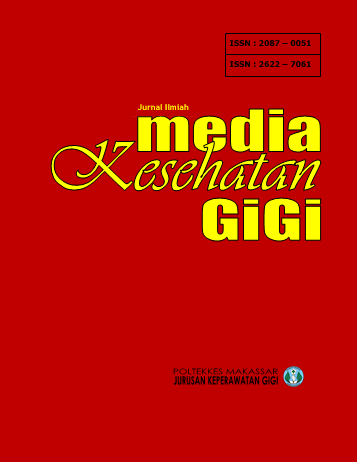Coated Tongue and its Relationship with Halitosis: Literature-Review
DOI:
https://doi.org/10.32382/mkg.v24i1.1125Keywords:
Coated tongue, halitosis, tongue scraper, oral hygieneAbstract
Coated tongue is a clinical condition characterised by the accumulation of debris, desquamated epithelial cells, and microorganisms on the dorsum surface of the tongue which can be used as an indicator of a person's general level of oral hygiene. This condition can be found in all ages and genders and is often associated with halitosis (bad breath). The onset of halitosis is due to the production of VSC (volatile sulfur compound) compounds by gram-negative anaerobic bacteria that colonise the surface of the tongue. Halitosis is a multifactorial condition that can negatively affect the quality of life and social relationships of sufferers. Therefore, socialisation efforts need to be made through education to all levels of society. This article aims to review the literature on the definition, aetiology, classification and various considerations in the management of coated tongue and halitosis in dentistry. Poor tongue hygiene is significantly associated with increased levels of VSCs and intensity of bad breath. Management strategies that include mechanical tongue cleaning such as the use of a tongue scraper have been shown to be effective in reducing halitosis levels. The role of dentists as health workers in the community is needed to create good oral health in the community, including efforts to optimise it through socialisation of maintaining tongue hygiene. Thus, coated tongue is an important etiological factor that needs to be considered in the evaluation and management of halitosis.
Downloads
Published
How to Cite
Issue
Section
License
Copyright (c) 2025 Daniel Rexi Sitompul

This work is licensed under a Creative Commons Attribution-ShareAlike 4.0 International License.
The authors retain copyright and grant Media Kesehatan Gigi journal the right of first publication with the work simultaneously licensed under a Creative Commons Attribution-ShareAlike 4.0 International License, which allows others to share the work with an acknowledgment of the work's authorship and initial publication in this journal.
pdf (Bahasa Indonesia) downloaded: 813






